
When you grow your own produce, it’s sometimes difficult to determine how much to plan for. There are dozens of factors that can affect production, and you might find yourself failing to harvest anything from one variety while bringing in a bumper crop of another.
This past spring was rainy and chilly across much of the United States, which made it ideal weather to grow Asian greens.
My garden’s bok choy went into overdrive this season, and I was left with dozens of plants and little idea what do with them all.
The good news is that bok choy is a versatile green that lends itself perfectly to a variety of dishes, so long as you’re willing to be creative.
Below are some suggestions for how you can put your own bok choy harvest to use – especially if you’re already sick of stir-fries.
But first, let’s cover some background information on this underappreciated Asian green.
What is Bok Choy?
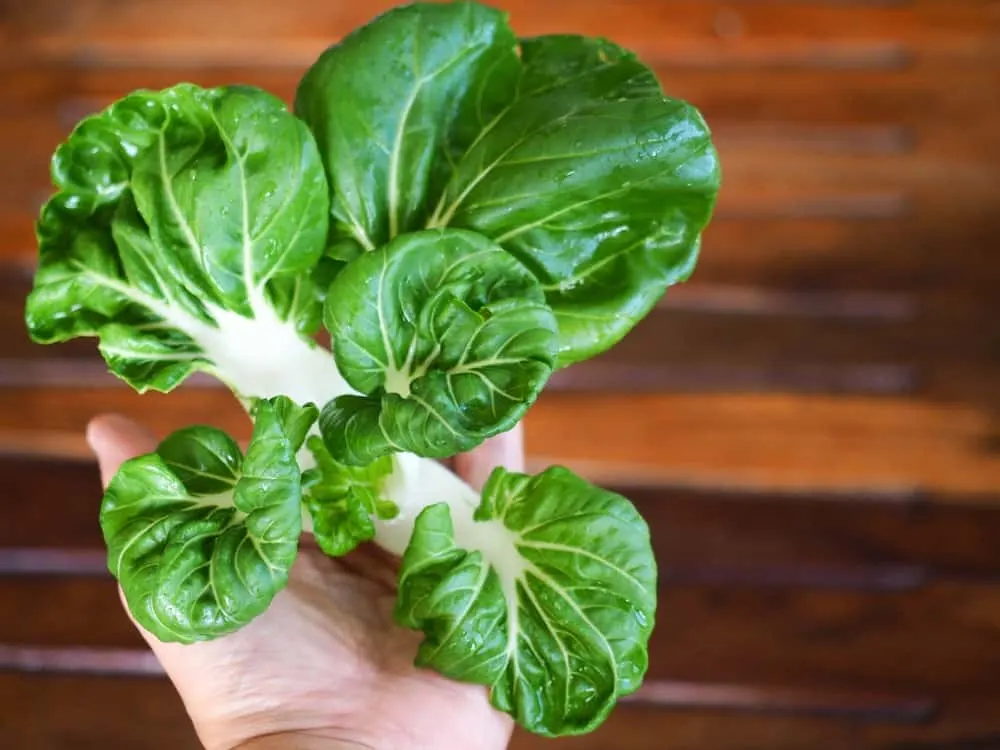
Also called pak choi and pok choi, bok choy is a Chinese cabbage that is known for its white fleshy stalks and thick green leaves.
In fact, its Cantonese name translates in English to “small white vegetable.” Popular across southern China and Southeast Asia, bok choy is a hardy green that can withstand chilly temperatures, which makes it an early season favorite for gardeners in cooler climates.
As a member of the cabbage family, bok choy has a crispy texture that holds up in high heat, which makes it a prized ingredient in Asian recipes.
The greens are high in nutrients, but low in calories and the thick stems hold plenty of fiber to keep you feeling full.
One cup of raw bok choy contains just nine calories and 1.5 grams of carbohydrates, and it is high in vitamin C, K, A, B6, folate, calcium, and beta carotene.
Though the most common preparation method is to dice the cabbage into small pieces for a stir fry, you’re missing out on its many benefits if you don’t explore alternative cooking strategies like those described below.
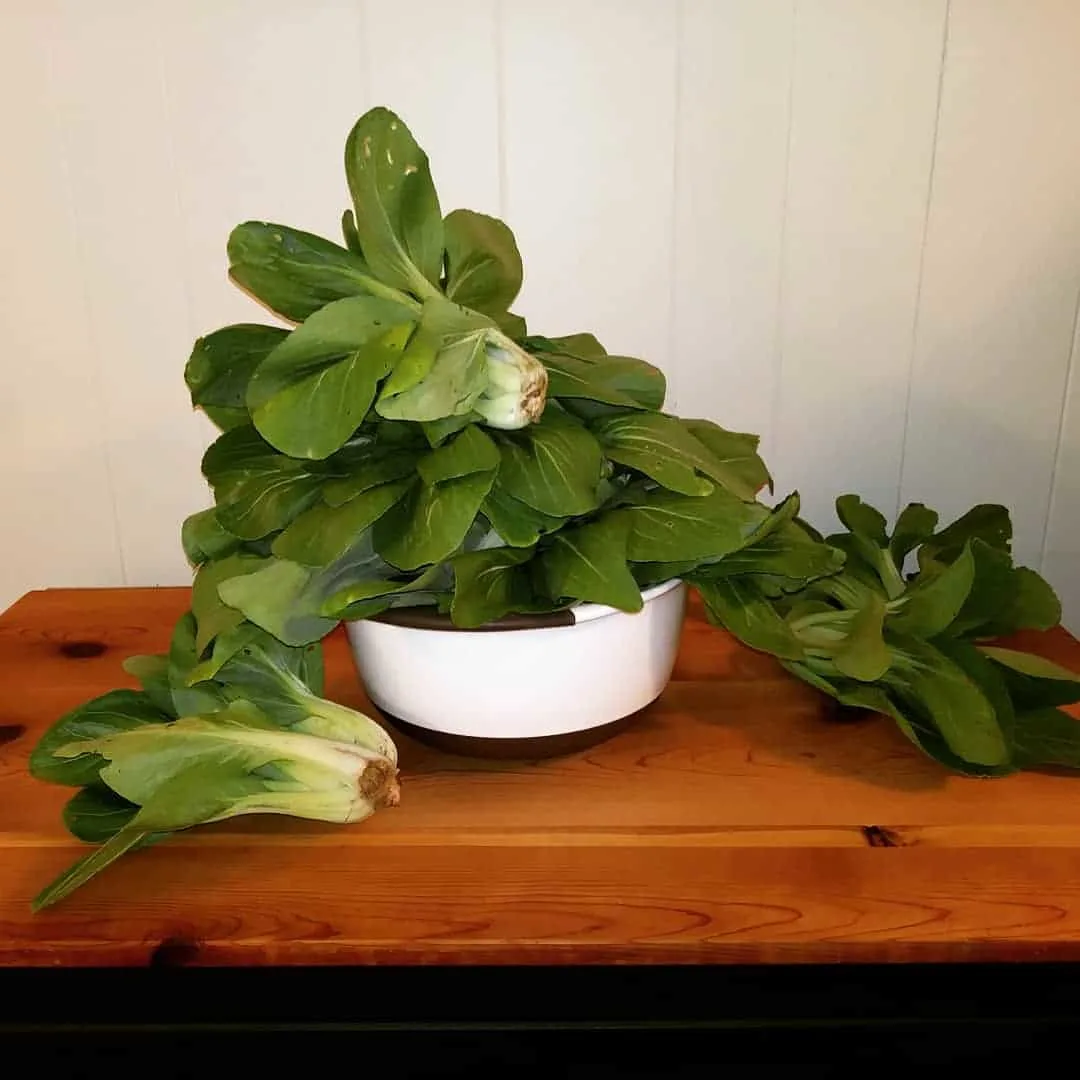
1. Braised Bok Choy
If you want to infuse your bok choy with rich flavor, braising the greens is a smart solution.
Start by separating the cabbage into its individual leaves, chopping the larger ones into small pieces. Heat a wok over medium heat and place the bok choy on the bottom, covering the leaves with enough chicken broth or vegetable broth to submerge them. Adjust the temperature to a low simmer and cook the leaves until they are tender and absorb the liquid, about 20 minutes.
You can spice up the dish with minced garlic, ginger, or chili paste, taking care to stir the mixture frequently, so they don’t burn to the bottom.
Serve as a side with rice and sprinkle toasted sesame seeds on top for garnish.
2. Roasted Bok Choy
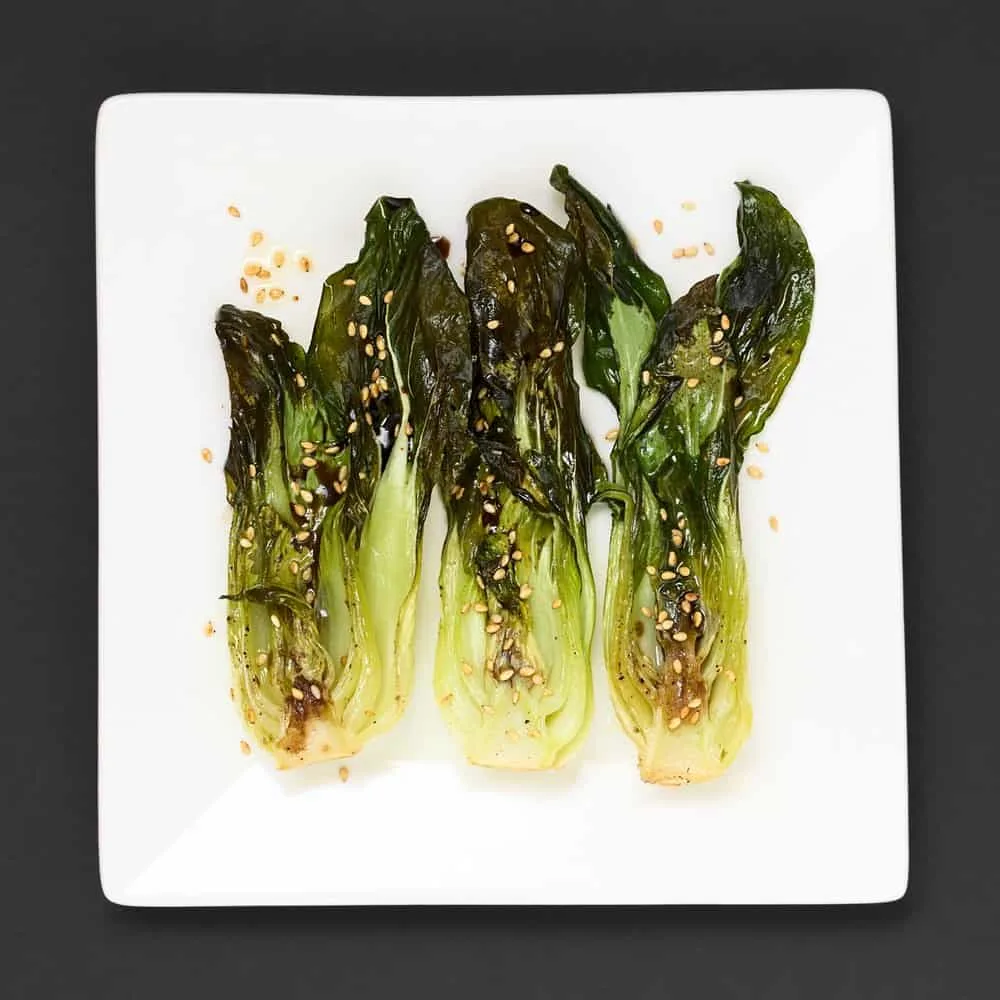
For those who prefer to skip the stove, it’s also possible to roast bok choy greens in the oven.
First, separate the cabbage leaves from the center stalk and chop them into even pieces. Drizzle them with oil and salt and toss them on a baking sheet. You’ll want to bake them at around 400 F in the oven for about 20 minutes, or until the leaves start to brown.
Note that full-size bok choy don’t always roast as well as baby ones because of their high water content. You may want to save this recipe for your smallest cabbages.
3. Serve Bok Choy Like Celery
Remember eating ants on a log as a child?
You can enjoy that same treat today by substituting bok choy for the celery.
Fill the white stem with your favorite topping (peanut butter, salsa, guacamole, and cream cheese are all great options) and enjoy this low carb treat as a midday pick-me-up.
4. Bok Choy Soup
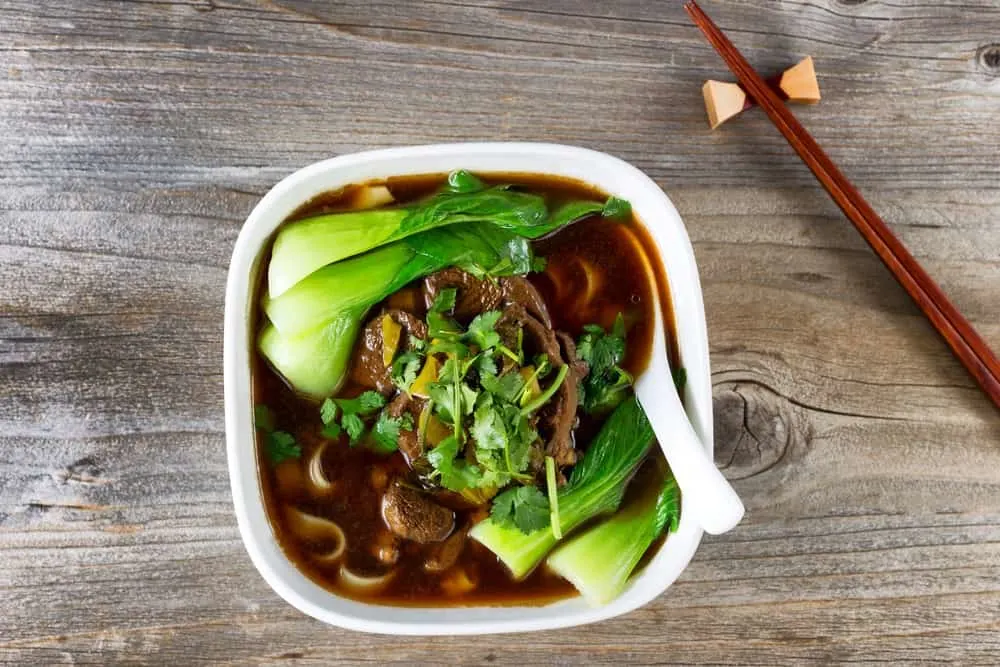
Bok choy’s thick white stems hold up well when boiled, which makes this cabbage green a perfect addition to soup recipes.
Udon noodle soup lovers will love this recipe that includes a poached egg in the broth, and you can put a vegan twist on a classic Vietnamese pho soup recipe with bok choy and mushrooms.
Ramen noodles can be fancied up to a spicy ginger bok choy soup, and you can keep things simple yet savory with this recipe for bok choy and chicken soup.
In fact, the green tops of bok choy leaves can be substituted for any other kind of green in your favorite soup recipe. They make a stellar alternative for spinach, kale, and even collards.
5. Bok Choy Fried Rice
Looking at a bunch of leftover rice and not sure how to use it?
Fry it up with soy sauce, your extra bok choy, and a few eggs for a quick weeknight dinner option.
6. Bok Choy Salad
While bok choy is traditionally served cooked, there’s no reason why you can’t add the raw greens to a salad for a subtle nutty flavor. Baby leaves work best, especially when mixed with another mild green like romaine.
7. Accessorize Sandwiches with Bok Choy
You can dress up your sandwich by serving it with a few leaves of bok choy on top. The greens hold up well in case you won’t be able to eat your lunch for a few hours, and they create an excellent moisture barrier between the bread and your condiments.
8. Grilled Bok Choy
The outdoor grill isn’t just for meat!
You can prepare bok choy to perfection with just a few minutes above the charcoal. Just cut the cabbages in half, drizzle them with olive oil, season as desired, and toss them on the grill. Turn after a few minutes to cook both sides, and you ready to indulge.
9. Bok Choy Sauerkraut
Homemade sauerkraut is not an experience to be missed, and you can make your own at home with extra bok choy. The white stems are best for this recipe, so you might want to find an alternative use for the leaves.
Making your own kraut is deceptively simple. You’ll need to finely chop the cabbage, sprinkle it with one tablespoon salt per four cups, and knead or pound the pieces until they are bruised and juicy. Both the salt and kneading action pulls the salt from the cabbage. To make the process easier, you can use a kraut pounder.
Once pounded, you can pour the cabbage into a wide-mouth glass jar and then pour in liquid so that the vegetables are just covered.
Though not 100% necessary, you’re likely to have better results if you use a starter culture of whey instead of water. You’ll want to keep the cabbage fully submerged under the water during the fermentation process, so a special fermentation weight is worth considering. If you don’t have one, any weighted object will work, such as a mason jar filled with dry beans – as seen below.
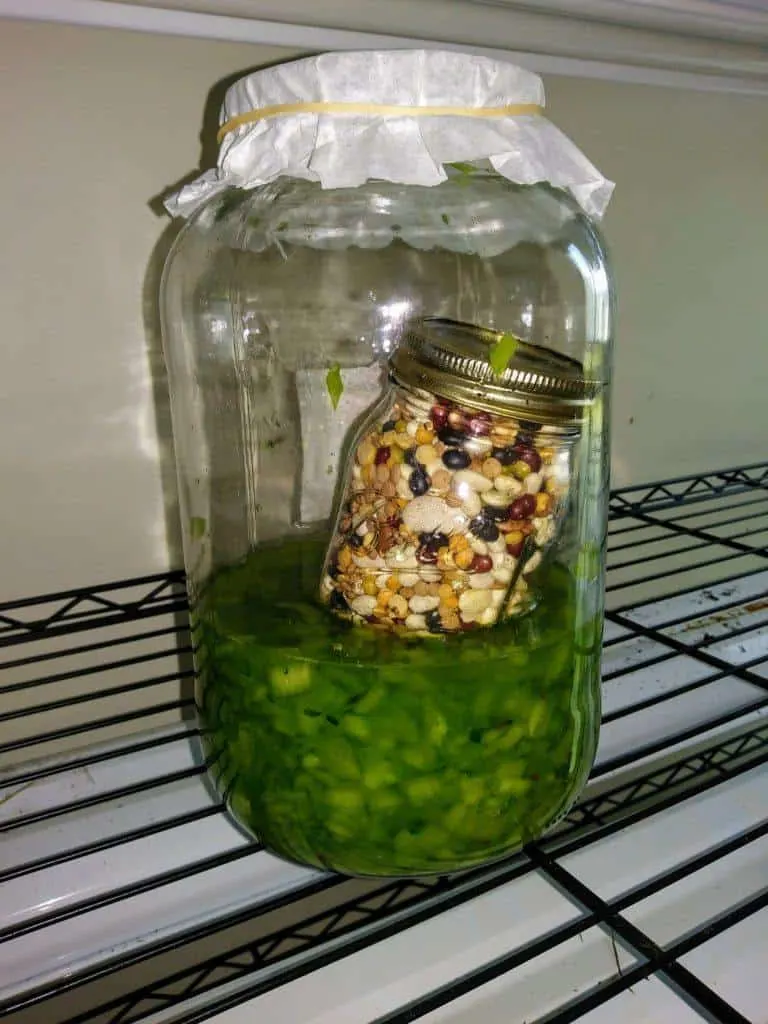
Cover the opening of the sauerkraut jar with a coffee filter or cheesecloth, and place it in a cool place out of direct sunlight. Your mixture should begin to bubble within a day or two, and it will be finished after a week.
At this point, you can store it in the fridge and let it ferment further for another two weeks so that the flavors get stronger. The final sauerkraut will have a milder, sweeter flavor than traditional varieties.
You can adjust the flavor any way you want before fermenting by adding ingredients like fresh garlic, chives, carrots, onions, celery, fennel seeds, and whatever else intrigues you.
10. Blanch and Freeze Bok Choy
If you still have more sauerkraut than you know what to do with after following these recipes, then it’s time to freeze the excess for future use.
Both the stems and leaves hold up well when frozen, especially if you blanch them in boiling water for two minutes first. While it’s possible to store your greens in standard freezer bags, you can dramatically extend their life and reduce their risk of freezer burn by using a vacuum sealer instead.
How to Buy Bok Choy
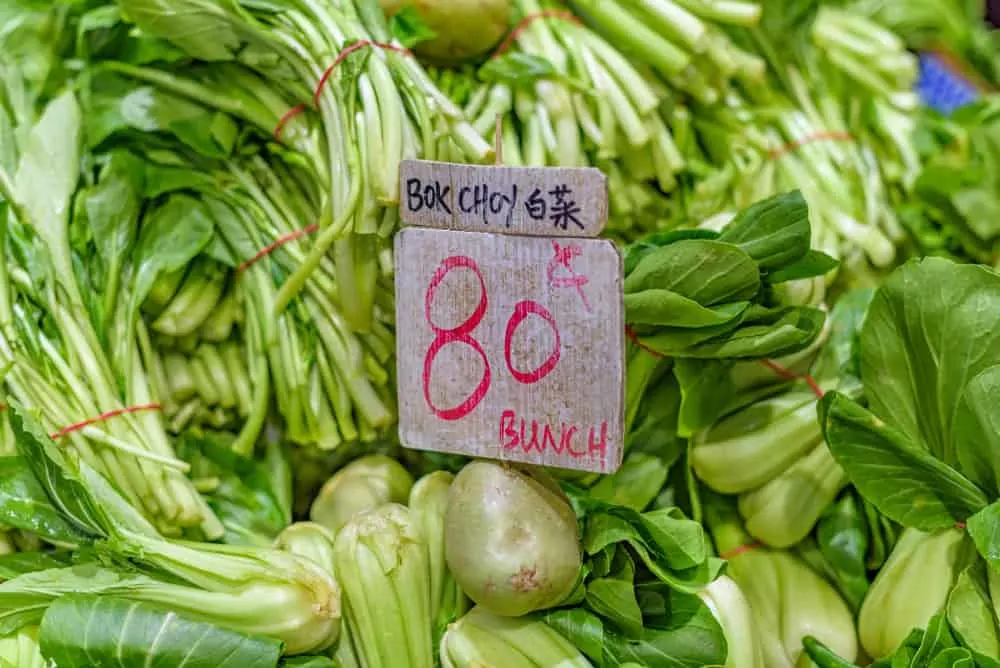
You don’t need to grow your own bok choy to enjoy the benefits; this green is gaining popularity and is often available in grocery stores and farmers’ markets.
When you’re looking to purchase some, make sure you check the leaves and stems for freshness first. You want a cabbage where the white stems seem firm, not rubbery, and the green leaves aren’t limp.
Once purchased and put in the fridge, your bok choy will last for up to a week in the crisper drawer. Take care to carefully wash out all dirt before prepping, as it often lodges in between the stems.
How to Grow Bok Choy for a Long-lasting Harvest
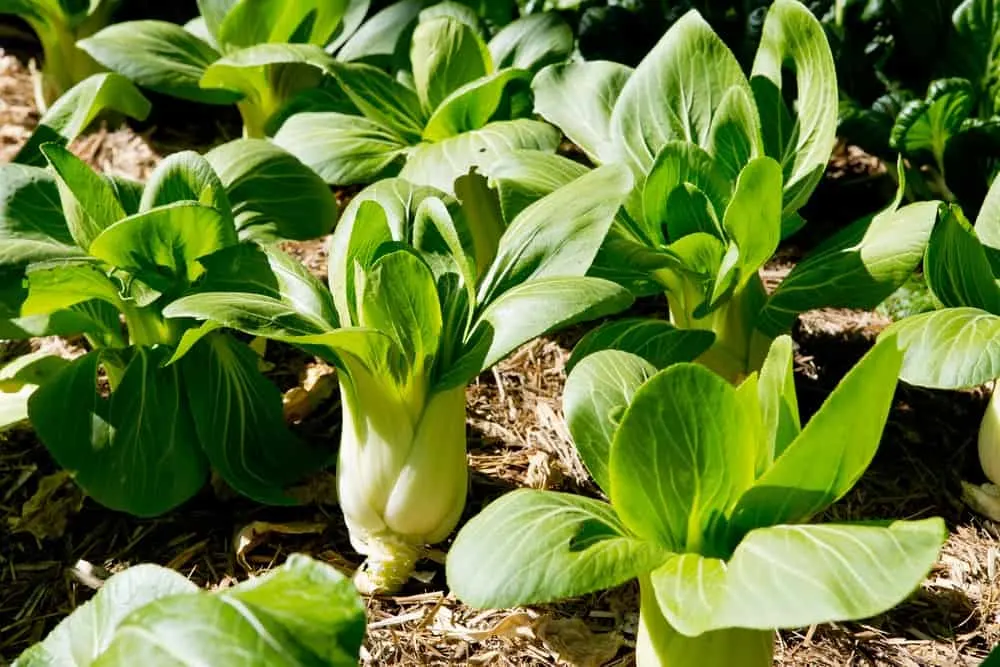
Are you feeling inspired by these recipes to get your own garden into bok choy production mode?
This versatile green is a breeze to grow. You can plant the seeds directly in prepared garden beds of loose, rich soil, or get a jump start on the upcoming growing season by starting them indoors to be transplanted a few weeks later.
The seeds should germinate in seven to ten days, and they will reach full maturity after 50 days. Harvest the entire plant when it reaches your preferred size, as some recipes work better with either baby or full grown sizes.
As bok choy is a cold-tolerant plant, you don’t want to start it too late in the growing season. You can plant it outdoors a week or two before the last frost of spring, and start again a month before the expected frost date in the fall.
For a longer lasting harvest, you’ll want to stagger your plantings every two weeks and plant a small amount each time so that you won’t be overwhelmed with the full supply at once.
It doesn’t take much time or effort to grow your own bok choy, and the benefits of having a home supply make it more than worth it.
Pin This To Save For Later


Get the famous Rural Sprout newsletter delivered to your inbox.
Including Sunday ramblings from our editor, Tracey, as well as “What’s Up Wednesday” our roundup of what’s in season and new article updates and alerts.


